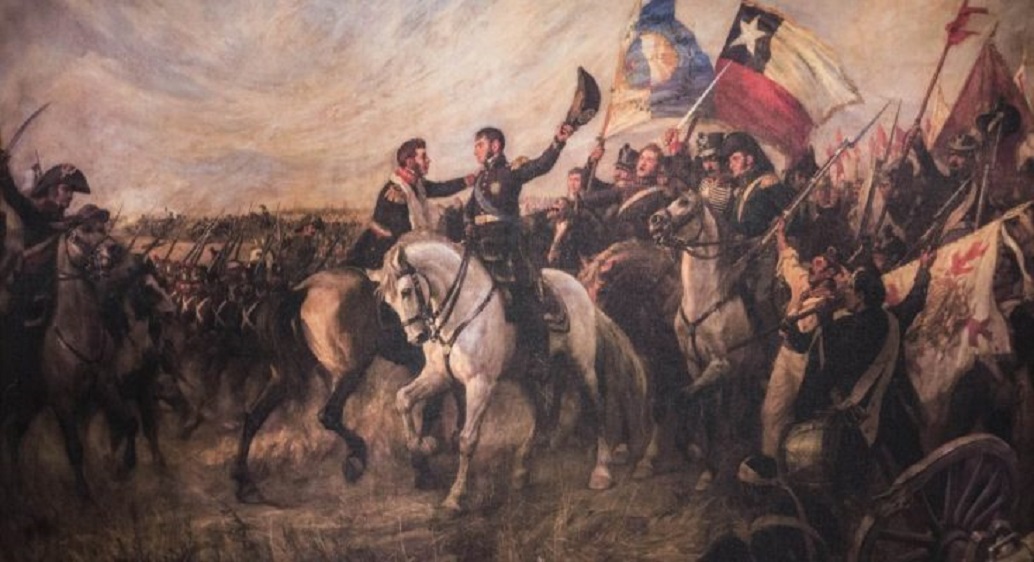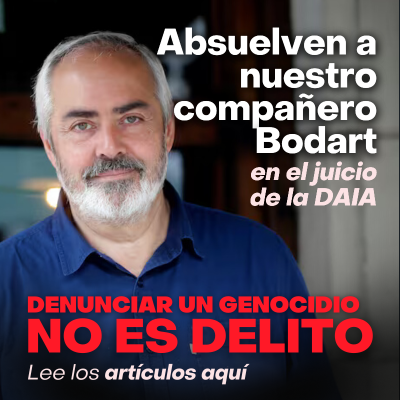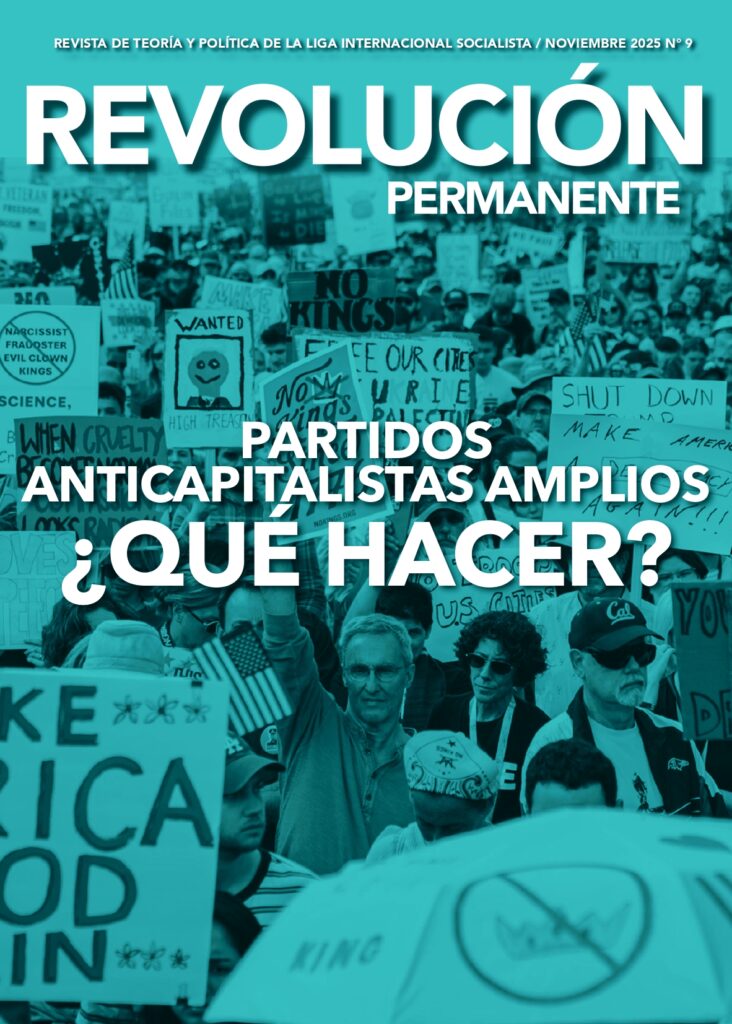El 18 de septiembre de 1810 se convoca a la Primera Junta de Gobierno en el país, momento que a nivel continental ocurrían las revoluciones de independentistas contra la monarquía española. En una nueva conmemoración del 18 de septiembre y en el marco de la celebración de las “Fiestas Patrias” reproducimos un fragmento del Capítulo VIII “La Revolución de 1810” del libro Interpretación Marxista de la Historia de Chile (tomo II) del historiador y militante marxista Luis Vitale. El análisis histórico desde la historiografía crítica es fundamental para nutrir las perspectivas revolucionarias a nuevos y nuevas militantes antiimperialistas y anticapitalistas, horizontes que construimos desde el Movimiento Anticapitalista y la Liga Internacional Socialista.
Capítulo VIII. La Revolución de 1810
En este capítulo aspiramos a señalar algunas de las características esenciales del proceso revolucionario que condujo a la Independencia. Dejaremos para el próximo volumen el análisis de las etapas de la revolución chilena y el papel que jugaron las fracciones políticas encabezadas por Martínez de Rozas, José Miguel Carrera, Bernardo O’Higgins y otros dirigentes de la Revolución.
¿Revolución democrático-burguesa?
Los historiadores liberales han tratado de presentar la Revolución de 1810 como un movimiento democrático inspirado en los ideales de la burguesía europea. En las últimas décadas, los autores de tendencia reformista han sostenido que la Revolución de 1810 fue una revolución democrático-burguesa inconclusa que comenzó realizando tareas propias de ese tipo de revolución, bajo la dirección de la burguesía comercial progresista, pero que lamentablemente esos hombres de avanzada fueron rápidamente desplazados por la aristocracia feudal que liquidó las posibilidades de un desarrollo capitalista en nuestro continente.
Ambas caracterizaciones parten de supuestos falsos: que la colonización española fue feudal y que paralelamente a la aristocracia terrateniente retrógrada se formó una capa de comerciantes progresistas que encabezaron la Revolución de 1810 inspirados en el programa democrático-burgués de la Revolución Francesa.
En capítulos anteriores, hemos procurado demostrar que la colonización española no tuvo un carácter feudal sino que generó un capitalismo incipiente y desde el comienzo dependiente de la metrópoli. Este tipo especial de capitalismo determinó el surgimiento de una clase dominante también “sui generis”. En lugar de estructurarse una burguesía que pasara por el cielo clásico europeo hasta culminar en la manufactura y la industria, en América Latina se formó una burguesía minera y terrateniente interesada en forma casi exclusiva en la producción y exportación de metales preciosos y productos agropecuarios para el mercado mundial. Los sectores de esta burguesía estaban combinados y ligados entre sí. Los mineros eran dueños de fundos y los terratenientes eran a su vez mineros. No había conflictos irreconciliables entre los latifundistas yla burguesía mercantil porque en general los comerciantes armonizaban el mercantilismo con el latifundio y los terratenientes abrían casas comerciales en los puertos y ciudades. El imperio español había conformado una evolución económica dependiente, deformando la economía colonial y coartando la posibilidades de un desarrollo industrial autónomo. El análisis de la economía y las clases sociales de ese tiempo nos conduce a sostener que en las colonias hispano americanas no existía una formación socioeconómica, una base material para originar una revolución democrático-burguesa.
La Revolución Francesa y las revoluciones democráticas europeas del siglo XIX se fundamentaron en un desarrollo capitalista dinámico y en la existencia de una burguesía industrial interesada en liquidar los vestigios semifeudales, realizar la reforma agraria y promover el desarrollo de un fuerte mercado interno.
En un análisis de superestructura, exclusivamente ideológico, se ha dicho que los dirigentes de la Revolución de 1810 estaban influenciados por los ideales de la Revolución Francesa. Cabe preguntarse ¿qué ideas liberales llevaron a la práctica los criollos en 1810?. Los historiadores liberales y reformistas han dado por supuesto que los criollos trataron de aplicar el programa democrático-burgués en el cual se inspiraban.
La burguesía criolla adaptó las ideas liberales a sus intereses específicos de clase. Los planteamientos libertarios de la burguesía industrial europea en lucha con la monarquía feudal fueron empleados por la burguesía criolla en contra de la opresión española. El concepto de libertad de comercio levantado por los industriales europeos para romper las trabas feudales y colocar sus artículos elaborados, fue utilizado por los criollos para luchar contra el monopolio comercial español. En Europa, el liberalismo fue la ideología de la burguesía industrial; en América Latina, las ideas liberales fueron adaptadas a los intereses de los terratenientes, mineros y comerciantes. Hubo una adopción formal del pensamiento liberal porque la burguesía criolla jamás pensó en aplicar los postulados programáticos fundamentales, como la reforma agraria, la industrialización y la creación de un mercado interno.
Los sectores de la clase dominante criolla estaban comprometidos en la tenencia de la tierra y en una economía preponderantemente exportadora. La burguesía criolla, clase social que encabezó la revolución de 1810, estaba por tanto incapacitada para realizar la reforma agraria, medida esencial que impulsa históricamente toda revolución democrático-burguesa. Bastaba que las rebeliones campesinas e indígenas del siglo XVIII cuestionaran la propiedad territorial de los criollos exigiendo que les devolvieran las tierras que los conquistadores españoles les habían arrebatado, para que la burguesía nativa se aliara con los representantes del rey en un frente único contra los desposeídos. En contraste con las revoluciones democrático-burguesas europeas, que afectaron a los poseedores de la tierra, en América Latina los latifundistas no sufrieron los efectos de la revolución de 1810 sino que fueron sus principales beneficiarios.
Un paralelo entre las revoluciones democrático-burguesas europeas y la Revolución de 1810 demuestra que mientras las primeras impulsaron el desarrollo industrial, realizaron la reforma agraria, crearon un mercado interno, aseguraron un desarrollo económico independiente y un modo de producción típicamente capitalista, en América Latina la clase dominante no realizó en 1810 ninguna de esas tareas básicas de la revolución democrático-burguesa, limitándose a obtener la independencia política. Mientras en Europa las revoluciones democráticas significaron un cambio profundo de la estructura económica y social, en Latinoamérica la Revolución de 1810 no modificó la estructura de clases de la sociedad colonial ni quebró el carácter dependiente de nuestra economía. La Revolución Francesa fue una revolución social. La Revolución de 1810 fue una revolución política separatista, una revolución que no perseguía un cambio radical de las estructuras sino un cambio simplemente político. La Revolución de 1810 cambió el gobierno, no la sociedad. En rigor, la Revolución de 1810 no fue una revolución democrático-burguesa porque mantuvo una economía meramente exportadora y dependiente, no realizó la reforma agraria ni fue capaz de crear un mercado interno y de iniciar un proceso de industrialización. Sólo reemplazó un equipo de explotadores de allende por otro de aquende.
La independencia no fue “prematura”, como han sostenido Alberto Edwards y Francisco Encina, sino que las condiciones objetivas y subjetivas estaban maduras para que la burguesía criolla tomara el poder. La Independencia respondía a las necesidades de una burguesía que realizó sólo aquellas tareas que podían esperarse de una clase social básicamente exportadora de materia prima, cuyo desarrollo había sido condicionado por siglos de economía colonial dependiente de una metrópoli que tampoco había sido capaz de realizar integralmente su propia revolución democrático-burguesa.
Legitimidad y lucha armada
En el afán de limar las aristas agudas de la lucha de clases, los historiadores burgueses de las últimas décadas han tratado de presentar la Revolución de 1810 como un acto legitimista y pacífico. Ya no les basta con negar la existencia de causas profundas en la Independencia, al aseverar que a España le convenía cortar los lazos con las colonias, sino que llegan a sostener que los criollos se separaron de la metrópoli en forma pacífica y respetando la legitimidad del rey. Los objetivos que persigue esta concepción de la historia son obvios.
Alberto Edwards, el representante más conspicuo de esta tendencia en Chile, refiriéndose a la Revolución de 1810 escribe: “en Chile la revolución burguesa se había realizado pacíficamente” (1). En otro de sus libros afirma: “Así la revolución pudo aparecer ante muchos, dentro de los antiguos principios del derecho monárquico, más legítima que la resistencia misma … Aquello no era un levantamiento contra el poder constituido” (2). La intención de este análisis que contribuye a la formación de un mito contemporáneo se pone de manifiesto cuando su autor confiesa: “Hemos insistido un tanto acerca del respeto por el orden establecido que caracterizó la revolución chilena de 1810, porque este rasgo ha subsistido en nuestro país a través de las vicisitudes de un siglo de vida republicana” (3). En otro párrafo precisa aún más su afán mistificador y su criterio de clase: “Por noventa años existió aquí la continuidad en el orden jurídico y una verdadera tradición política, cuyos cambios o mejor dicho evoluciones, se produjeron en forma gradual, pacífica, lógica, y presentaron, por tanto, un carácter mucho más europeo, que hispanoamericano”.
No es cierto que la historia de Chile haya transcurrido en forma pacífica. Las revoluciones de 1823 a 1830, las de 1851 y 1859, la contrarrevolución de 1891 y los movimientos revolucionarios de 1924-25 y 1931-32, además de los tres siglos de guerra araucana, las rebeliones, las huelgas obreras y la violencia de la lucha de clases en las explotaciones mineras, agrícolas e industriales, demuestran que Chile está lejos de ser ese país mistificado por los historiadores tradicionalistas, como lo demostraremos en volúmenes posteriores.
Por el momento, nos ocuparemos de la afirmación de que la Revolución de 1810 fue legitimista y pacífica. Para sostener esta tesis, Alberto Edwards se vale de la artimaña de limitar la Revolución al breve período que transcurre entre septiembre de 1810 y abril de 1811. La Revolución emancipadora no dura siete meses sino que es un proceso que en Chile se prolonga de 1810 a 1818. En este período se produce una guerra declarada entre España y la colonia insurrecta. Es una década de revolución y contrarrevolución armada, de acción y reacción sangrienta.
El argumento de la legitimidad o sea la actuación de las primeras Juntas en nombre de Fernando VII, fue utilizado en forma circunstancial y respondió a una lucha tendencial entre criollos moderados, reformistas y revolucionarios. Analizando la esencia de los sucesos, se llega a la conclusión de que no existe ningún interés legitimista en la revolución chilena y latinoamericana, sino que el objetivo estratégico de la Revolución de 1810 es la conquista del poder para la burguesía criolla. ¿Puede caracterizarse de legitimista una revolución que desconoce al gobernador Elío nombrado por las autoridades españolas para la Capitanía General de Chile en reemplazo del gobernador depuesto por la Primera Junta? ¿Puede llamarse legitimista una revolución que disuelve la Real Audiencia, el más alto tribunal de la monarquía española en las colonias? ¿Puede acaso ser legitimista una revolución que liquida el monopolio español, decreta el libre comercio y se hace cargo de todas las entradas fiscales sin enviar un solo peso al rey “legítimo” que reclama ayuda en España? ¿Es legitimista la actitud de José Miguel Carrera al crear la bandera, el escudo nacional y dictar un reglamento constitucional que niega la autoridad de cualquier país extranjero para inmiscuirse en asunto internos de Chile?.
¿Puede denominarse pacífico un proceso en el que criollos se baten con las armas en la mano desde 1810 hasta la batalla de Maipú, pasando por las guerrillas de Manuel Rodríguez y el triunfo de Chacabuco? ¿Puede hablarse de un traspaso pacífico del poder cuando los españoles resisten desde el motín de Figueroa en 1810 hasta la violencia contrarrevolucionaria de un San Bruno en plena Reconquista?. Las clases dominantes no entregan nunca el poder en forma pacífica. Defienden sus privilegios e intereses con toda la fuerza de la violencia reaccionaria, como lo hicieron los españoles en sus colonias. La historia no registra ningún caso de triunfo pacífico de una revolución. Chile no podía ser una excepción. El proceso revolucionario que condujo a la independencia política de Chile y de América Latina triunfó por la vía de la insurrección armada.
La participación del pueblo
Una de las características de la Revolución de 1810 fue la escasa participación del pueblo. Los sectores populares fueron al principio indiferentes a una revolución que no significara la emancipación social sino la consolidación de sus explotadores inmediatos: los patrones criollos. Esta situación se modificó en parte cuando los españoles iniciaron la Reconquista, debido no a un cambio de la burguesía criolla sino a un fenómeno de reacción de las capas pobres contra los abusos de los españoles durante la guerra. Existen, por tanto, dos etapas principales en cuanto a la participación del pueblo en el proceso de la independencia chilena. La primera que va desde septiembre de 1810 hasta el desastre de Rancagua y la segunda, desde la Reconquista española hasta la declaración de la Independencia en 1818.
La primera etapa se caracteriza por una escasísima participación de los sectores populares en la Revolución de 1810, salvo la respuesta a uno que otro llamado esporádico de José Miguel Carrera en demanda de apoyo popular para enfrentar a la oligarquía criolla. El movimiento de septiembre de 1810 que desplaza al gobierno español e impone la Primera Junta no reúne más de 350 personas en el Salón del Consulado. En 1810 no actúa ni siquiera la mayoría de los criollos sino el sector más acomodado de la burguesía minera, comercial y terrateniente. Los criollos pobres, los mestizos y fundamentalmente los indios, se mantuvieron ausentes del proceso durante los primeros años de la revolución separatista. Los sectores populares no se sentían interpretados por un movimiento que no significaba la emancipación social sino solamente la conquista del poder para la burguesía criolla. Los principales jefes de la Revolución de 1810 eran los explotadores directos de las capas populares. Para éstas, el enemigo de clase más inmediato era el propio patrón, el criollo que los explotaba. La burguesía criolla no busca en esta primera etapa el apoyo de las masas porque, además del temor de ser rebasada por ellas, cree bastarse con sus propias fuerzas para derrocar a las autoridades españolas desmoralizadas por la invasión napoleónica.
El movimiento de 1810 en su primera fase sólo tuvo características masivas en México y el Alto Perú, donde los campesinos e indígenas trataron de combinar la lucha por la independencia política con la revolución agraria. Pero los Hidalgo y Morelos que luchaban tanto contra los españoles como por la expropiación de los terratenientes criollos, no abundaron en las colonias hispanoamericanas.
La segunda etapa de la revolución chilena, que comienza con la Reconquista española, se caracteriza por una mayor participación del pueblo. La nueva actitud de las masas a favor de la Revolución no fue provocada por un cambio en la posición de la burguesía criolla sino por una reacción de los sectores populares ante los atropellos cometidos por los españoles durante la Reconquista. El saqueo de los campos por los realistas, la represión de los españoles contra los artesanos y pequeños comerciantes mestizos y criollos, los abusos del regimiento de los Talaveras comandado por el capitán San Bruno, empujaron a los sectores populares al bando de los que luchaban por la independencia. Blest Gana en su novela “Durante la Reconquista” ha encarnado en el “roto” Ñe Camara, diestro en el manejo del corvo, la participación del pueblo chileno en la lucha contra la monarquía española.
La incorporación de los sectores populares dio un extraordinario impulso al combate por la liberación política. El apoyo popular fue la clave del éxito de la guerra de guerrillas de Manuel Rodríguez. Los disfraces de este guerrillero, su ocultamiento en los ranchos, sus increíbles fugas y su movilidad permanente, fueron posibles por el apoyo efectivo que le brindó el campesinado y el artesanado.
“De las campañas de la Independencia Nacional –dice Roberto Hernández- se han referido altos hechos; pero nadie hace recuerdos particulares en obsequío de los rotos que, con el fusil o la lanza, se atrajeron entonces la admiración de sus mitades, no dejando otro monumento de su bravura que las leyendas de los vivaques en el ejército de la República. Rotos de marca mayor fueron los que batieron a los célebres Talaveras; y rotos pintiparados los que al grito de ¡Viva la Panchita! hicieron frente a San Bruno, tan temido hasta de los hombres de capa larga. Rotos campesinos fueron los que montaron a caballo con Villota en Curicó, con Salas en San Fernando y sirvieron en las montoneras de Manuel Rodríguez, el caudillo popular por excelencia (4).
En ese momento de la historia chilena, el peso de la resistencia contra los españoles fue soportado fundamentalmente por las capas pobres del país. Mientras los burgueses criollas más acomodados capitulaban ante los gobiernos de los españoles Osorio y Marcó del Pont, llegando algunos de ellos a renegar de la Independencia en el Acta firmada en vísperas de la batalla de Chacabuco, los campesinos y artesanos ingresaban a las filas de la resistencia activa, en las ciudades, en las guerrillas rurales y luego en el Ejército Libertador de los Andes.
La historia oficial, junto con soslayar la actitud cobarde y vacilante de importantes sectores de la burguesía criolla, ha ocultado sistemáticamente el papel jugado por las capas populares en el proceso de liberación política de Chile. Ha correspondido a un hijo de la clase obrera, a Luis Emilio Recabarren, líder máximo del proletariado nacional el primer intento de romper la mistificación histórica con ocasión del centenario de la República: “¿Quiénes dieron el grito de emancipación política en 1810? ¿Dónde estuvieron y quienes fueron los personajes del pueblo trabajador que cooperaron a aquella jornada? La historia escrita no nos dice nada y los historiadores sólo buscaron héroes, los personajes, entre las familias de posición, entre la gente bien. En los monumentos que complementan la historia tampoco vemos al pueblo [… ]. Acaso los que vencieron al español en los campos de batalla ¿pensaron alguna vez en la libertad del pueblo? Los que buscaron la nacionalidad propia, los que quisieron independizarse de la monarquía buscaban para sí esa independencia, no la buscaban para el pueblo [… ]. Tan es así que los llamados padres de la patria, aquellos cuyos nombres la burguesía pretende inmortalizar, aquellos que en los campos de batalla dirigieron al pueblo-soldado para pelear y desalojar al español de esta tierra, una vez terminada la guerra y consolidada la independencia, ni siquiera pensaron en dar al proletariado la misma libertad que ese proletariado conquistaba para los burgueses reservándose para sí la misma esclavitud en que vivía” (5).
Referencias.
(1) ALBERTO EDWARDS: La Fronda Aristocrática, p. 25, Ed, del Pacífico, Santiago, 1952
(2) ALBERTO EDWARDS: La Organización Política de Chile, p. 26 – 27. Ed. Del Pacífico, Santiago, 1943.
(3) Ibídem, p. 28
(4) ROBERTO HERNANDEZ: El Roto Chileno, páginas 7 y 8, Valparaíso, 1929.
(5) LUIS EMILIO RECABARREN: Ricos y Pobres. A través de un siglo de vida republicana. El Balance del siglo. “Conferencia leída en Rengo la noche del 3 de septiembre de 1910 en ocasión del primer Centenario de la República de Chile, y dedicada al proletariado estudioso que busca su redención”. Imprenta New York, páginas 18, 19 y 20, Santiago, 1910.




